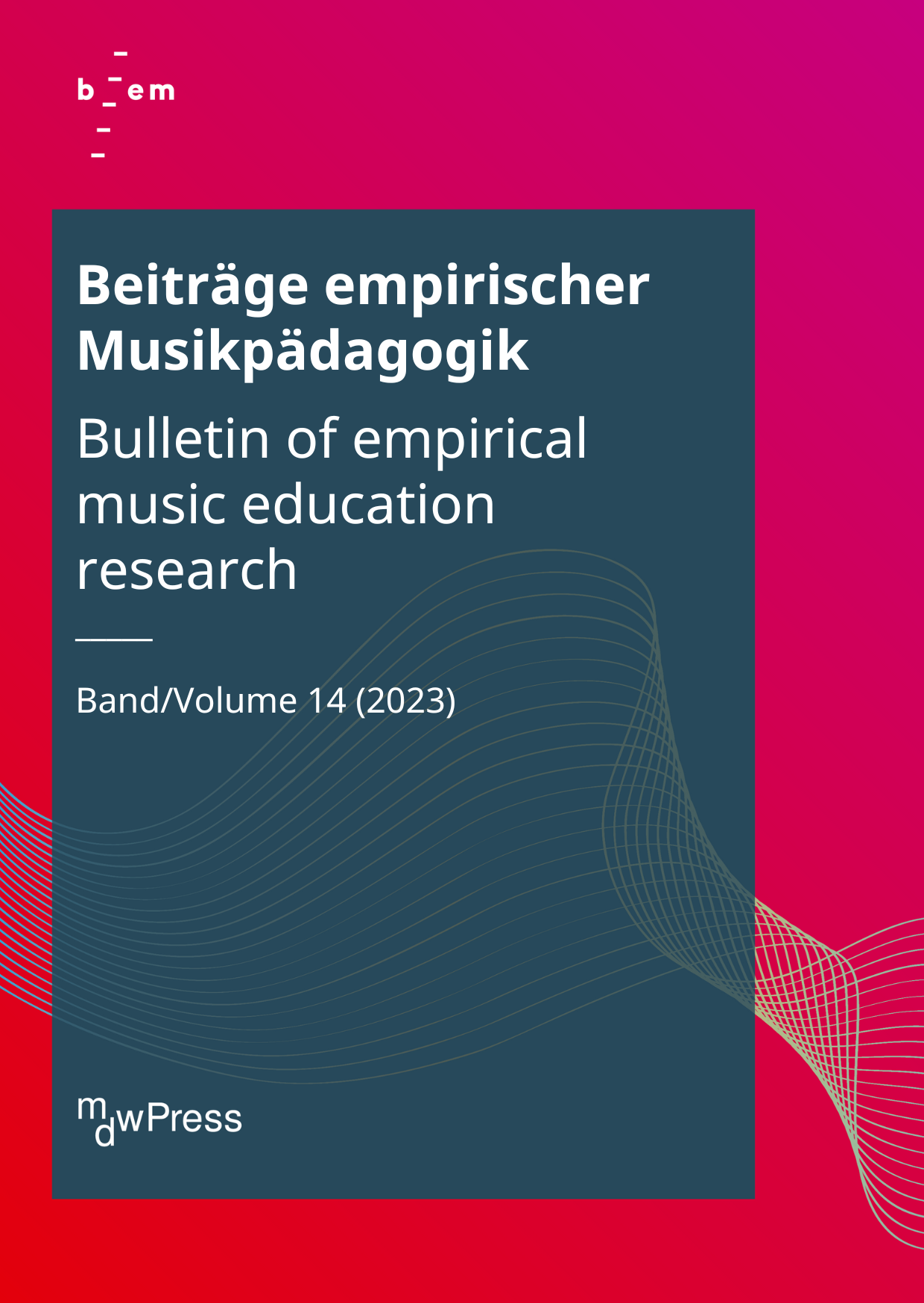Exploring the relation between teacher autonomy support and children’s musical creativity
A complexity approach to studying interaction in primary school music lessons
DOI:
https://doi.org/10.62563/bem.v2023233Keywords:
autonomy support, musical creativity, divergent thinking, convergent thinking, primary school music educationAbstract
In primary music education a key question is what teachers can do to stimulate students’ musical creativity. For the answer, delving into teacher-student interaction during the creative processes in the naturalistic setting of primary music lessons is required. Twenty-six music lessons from thirteen teachers and their classes of seven Dutch schools were recorded to explore the relation between teachers’ autonomy support and students’ divergent and convergent thought & action. Quantitative sequential analysis and thematic analysis were combined to examine this relation, using a framework offered by Complex Dynamic Systems theory and Enaction theory. In contrast to classical correlational analysis, sequential analysis focuses on the dynamics, and thus on the temporal relation in classroom interaction. The results show that mostly lower-level autonomy support was offered. Especially in creative lessons, higher-level autonomy support is more likely to lead to higher-level student divergent thought and action. For convergent thought and action, the results were less conclusive. An implication of the findings is that (research into) music education could benefit from interventions aimed at enhancing autonomy support in primary school music.
Downloads
Published
How to Cite
Issue
Section
License
Copyright (c) 2023 Linda Hendriks, Henderien Steenbeck, Evert Bisschop Boele, Paul van Geert

This work is licensed under a Creative Commons Attribution-NonCommercial 4.0 International License.
Bulletin of Empirical Music Education Research (b:em) is published as an open access online journal. All articles are freely accessible online free of charge, there are no publication fees (Diamond Open Access). The standard licensing of the articles is CC BY-NC 4.0 (Creative Commons Attribution-Non Commercial 4.0 International (CC BY-NC 4.0))



